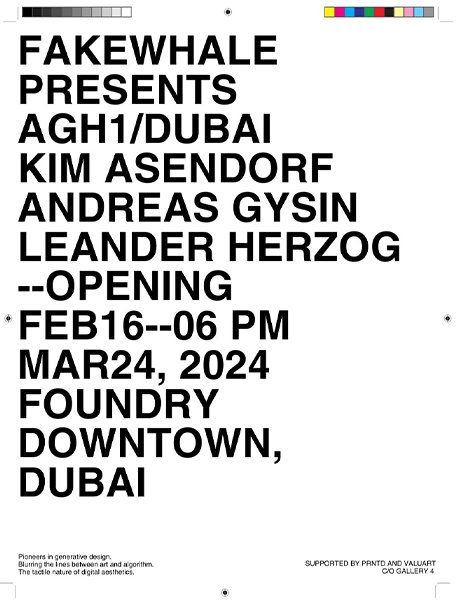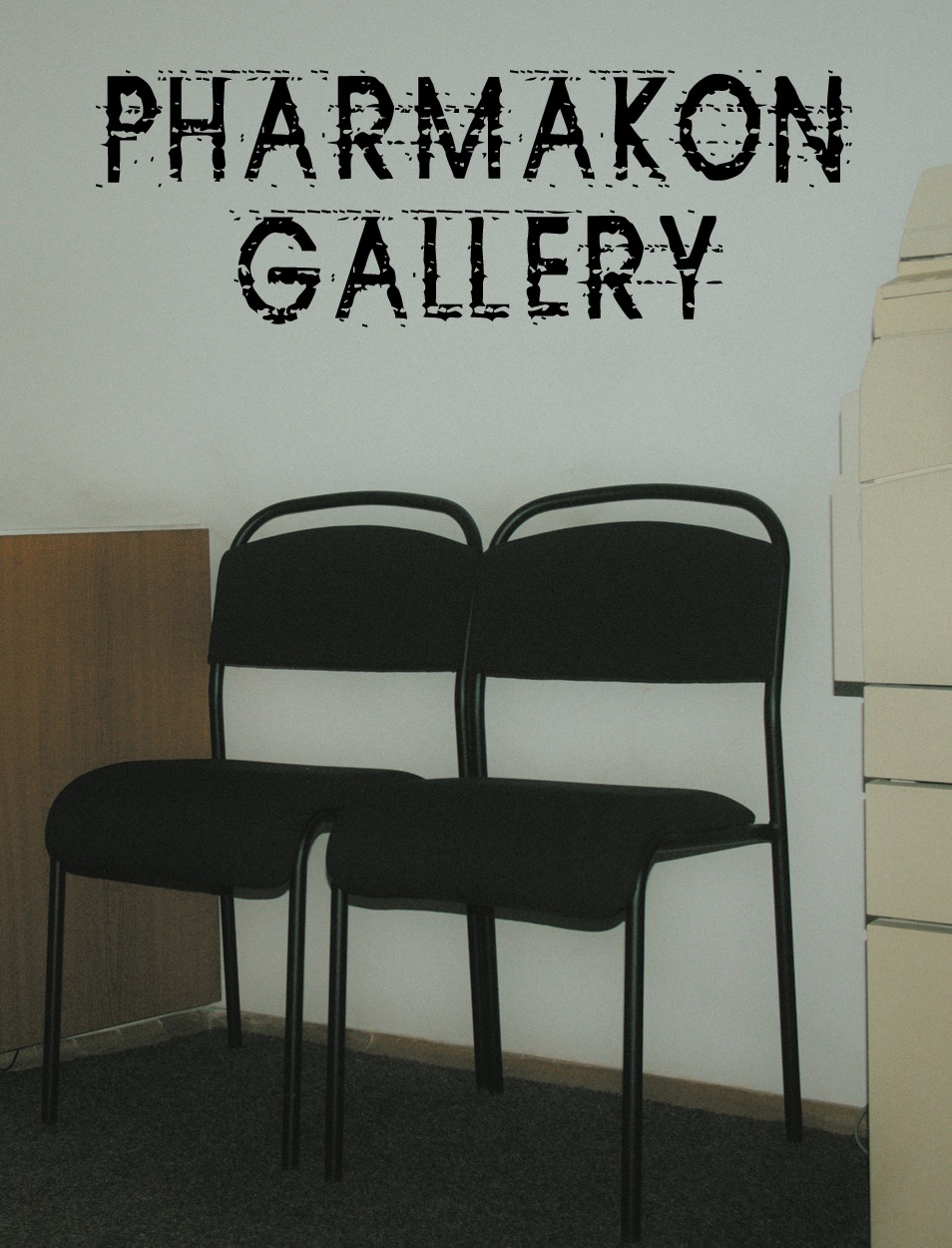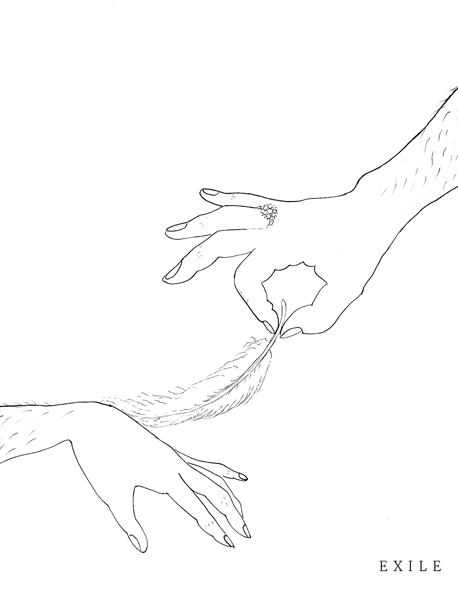Submission
March 11, 2024
Dungeon Keepers: Earlier than Primordial Middle Ages
Botond Keresztesi, Stach Szumski @MeetFactory, Prague
February 15 — April 14, 2024
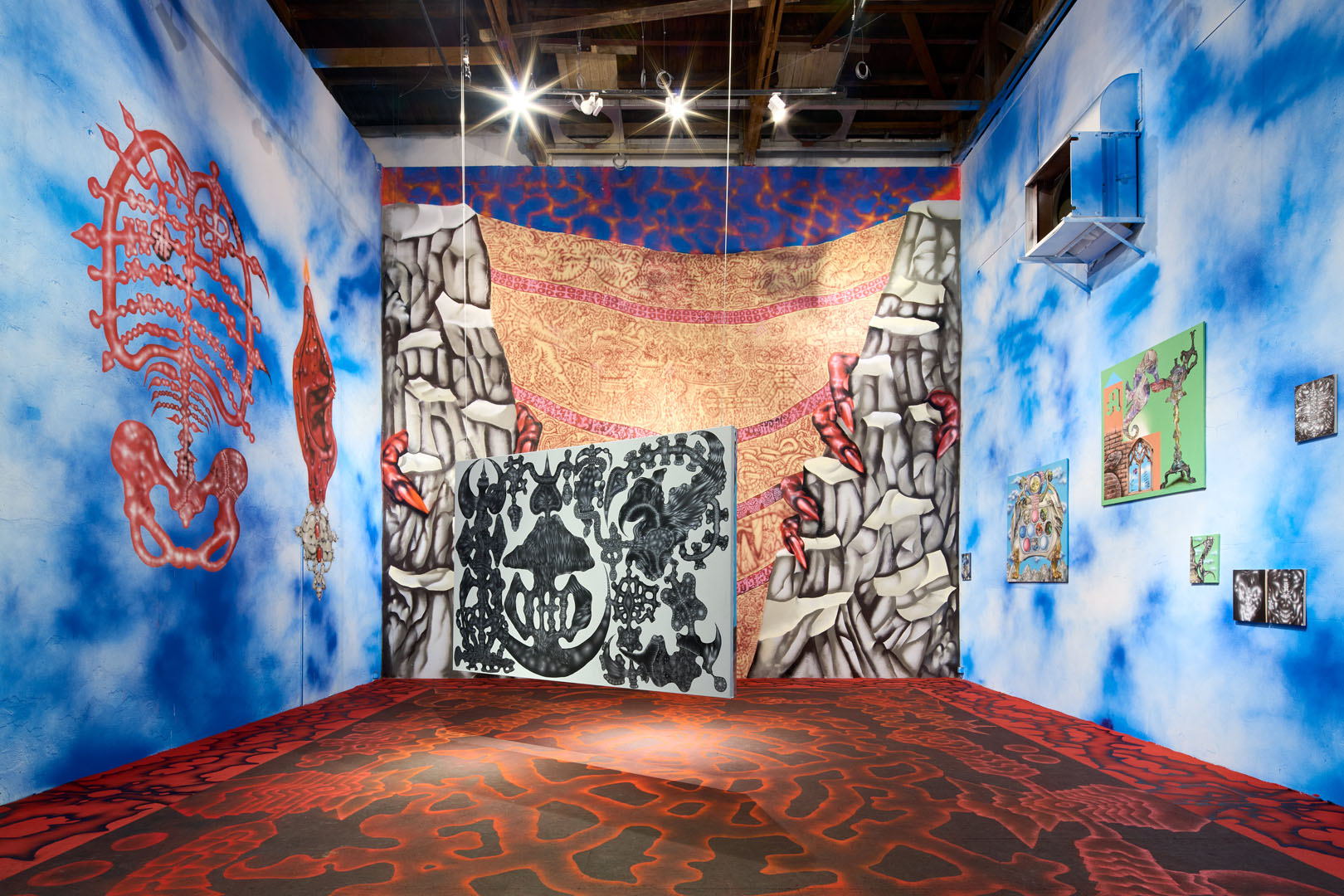
Every text accompanying an exhibition makes one believe to be the key to unlock deeper understanding of art. I propose a keyhole instead. It allows us to look at the works without being seen. It adds some meanings but doesn’t try to explain what is it all about. In fact, the majestic corpus of painting created by Stach and Botond is quite self‐explanatory ‐ layers and sediments of visual inspirations coming from human and non‐human activities are merged in an immersive space. Those are the dungeons where eloquent erosion and eclectic morphology come together to re‐evaluate and redefine what is macabre, appealing, organic, bizarre and horrifying. On top of those terms, there is only entropy ‐ the slow yet inevitable decline of matter. When I peep at their works, categories such as action, space, and time feel inadequate and short.
It seems as if the very concept of time got lost somewhere between the moment when Caesar Constantine placed the Roman Empire under the rule of the Christian God and the four cuddling Tetrarchs were carved in stone and placed at the Philadelphion temple in Constantinopol — or the other way around. Anyway, the fourth‐century people seemed to pay less and less attention to the fact that the exuberant pace of human life tends to be divided into years, seasons, low and high tides. In the same way that they lost the sense of accuracy, visible in the distorted proportions of well‐known sculptures, people lost the reason to keep track of events. One might call it a mess, but I call it poetic license in treating the rhythm of life. What came next were the waves of tender barbarians and timeless weeks that became months, years, and centuries. The whole empire, ruled and divided, seen, obscene, and conquered, fell into sweet timelessness—unrecorded and unplugged. Truly liberated times when no one seemed to bother to keep track of documenting what was yesterday and make any plans for tomorrow—primordial Middle Ages. Do you ever wonder when all the fun ended? Well, as they say, new beginnings often require a round date. Pope Sylvester II, originally thought to be the last Pope, leading people into the final rupture of the year 1001, turned out to be the one ushering in the next millennium. Rightly so. He was determined to reintroduce time counting into people’s lives by importing Arabic numerals to the Christian world, packaged in the most appealing form of a computing machine ‐ the abacus. With the world well‐equipped and saved from the apocalypse, everyone was ready for a fresh start ‐ where the shapes of days and weeks became as sharp as the stone blocks of newly built Romanesque cathedrals.
At the top of a massive cave, there is a hole in the ceiling. While standing under it during a dry and hot summer night when the wind from the Great Hungarian Plain brings the smell of weeds, you may see the stars – just a small part of the firmament, a scrap of a map. This is the third hole in the Szélim Cave, overlooking the industrial mining city of Tatabánya. A third eye that, when stared at long enough, will allow you to sense the circular movement of the planet ‐ as the stars move and disappear within the sharp rocky circumference – similarly to one of the Skyspace pieces by James Turell. For someone who would be able to peer into the cave from the sky level – an alien from Sirius, or a spirit – it would resemble a hole in the ground. A pit you can easily be sucked into to dive inside out through the sediments from the Upper Trias until the Anthropocene, penetrating different layers of limestone as if it were made out of soft matter ‐ like touchwood or cotton candy. It is believed the hole was made by a giant Turul, whose sculpture was later cast in bronze and placed next to the cave ‐ but that’s another story.
Some say time is like a mother, but I’d rather see it as a father—strict and exact, meticulously marking hours and days. Occasionally, it shows temporary generosity and tenderness—those are brief yet precious moments. I am a father myself, and truth be told, I can hardly recall my life before becoming one. Well, I do remember facts and events, but it’s more about the mindset—the constant awareness of someone depending on you, living off you, and you living for them, day after day, month after month, especially in the first few years when those creatures are entirely dependent and vulnerable.
I keep track of time for my kids. They don’t need to know it yet, and I don’t feel compelled to teach them. Some things come to you regardless of time, but only when you‘re ready. Children will grow and get less reliant. Time will swallow them as they understand the basic concept of minutes and hours — it’s inevitable. As grow, they will become more used to spend time with me—less with their mother. Then everything accelerates, and all those early days and interrupted nights, moments of losing your temper and frustration over your shortcomings as a parent become distant memories, like an anecdote you bring up from time to time to elicit laughter and perhaps embarrass your teenage children in front of others.
But that’s all too futuristic for me at the moment. I’m still in the early stage, where the idealized image of parenthood clashes painfully with the reality of what many fathers actually become — strict and meticulous when they should be gentle and caring. They observe their children exploring life and being slowly devoured by abstract categories such as space and time.
— Piotr Sikora
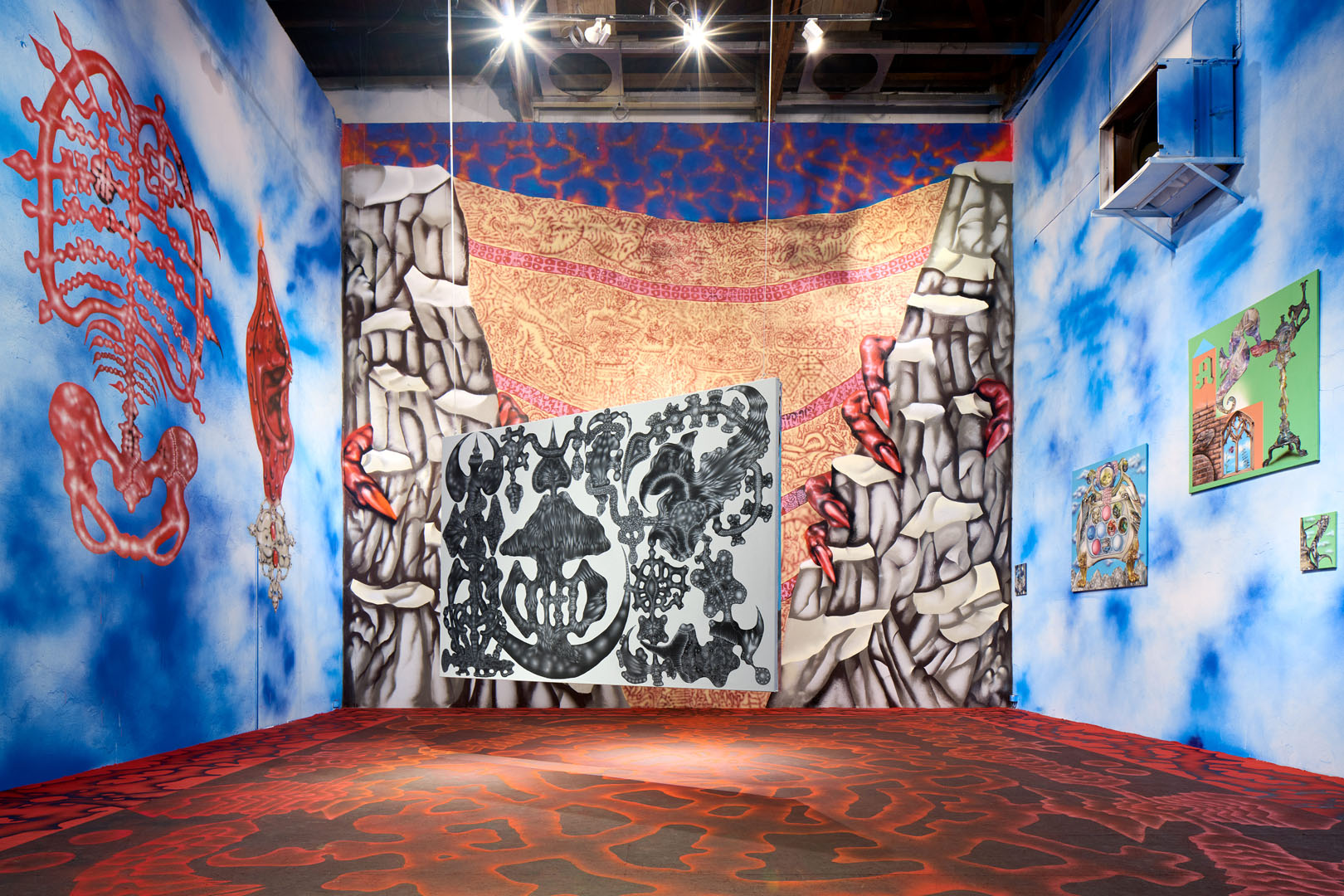
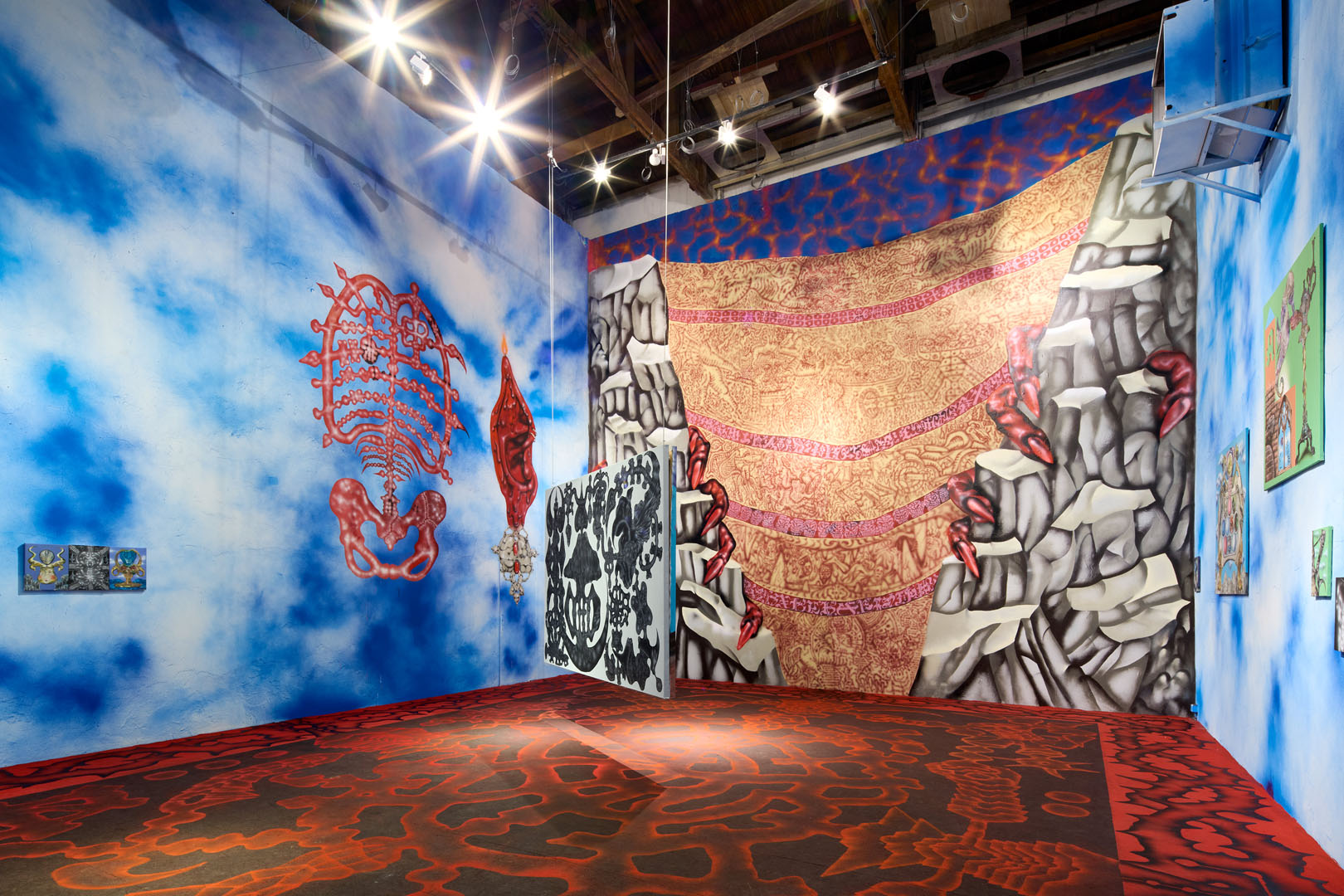
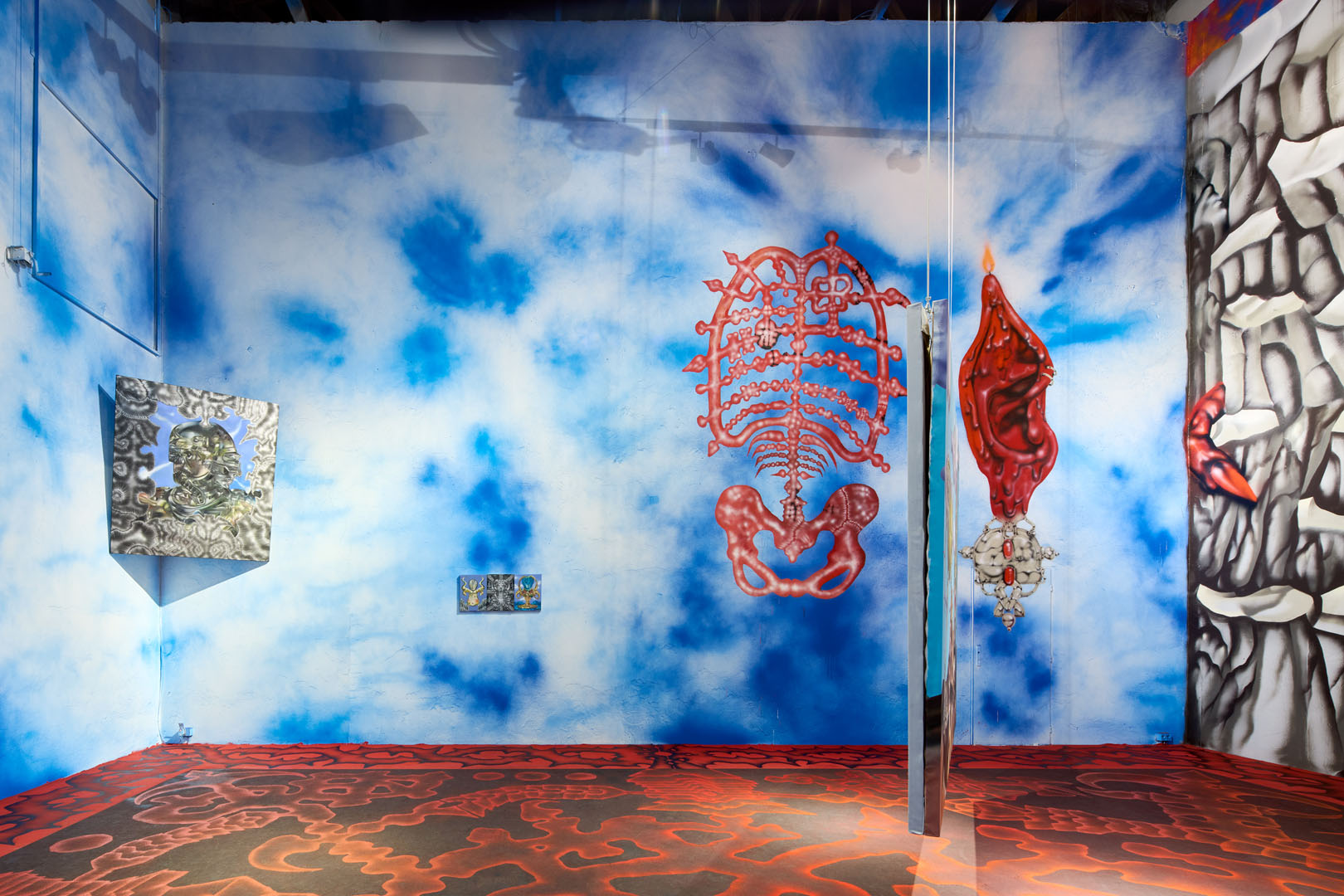
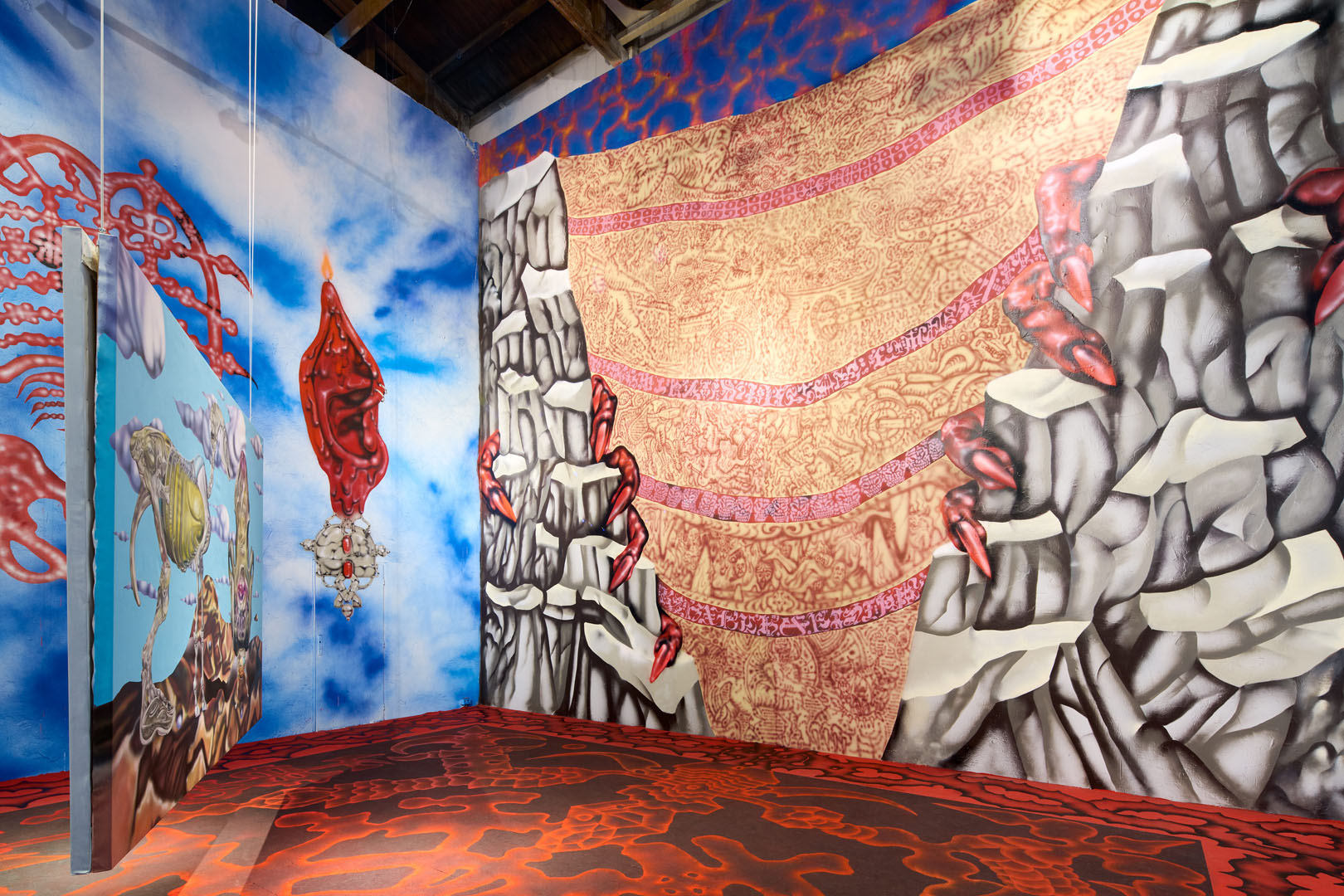
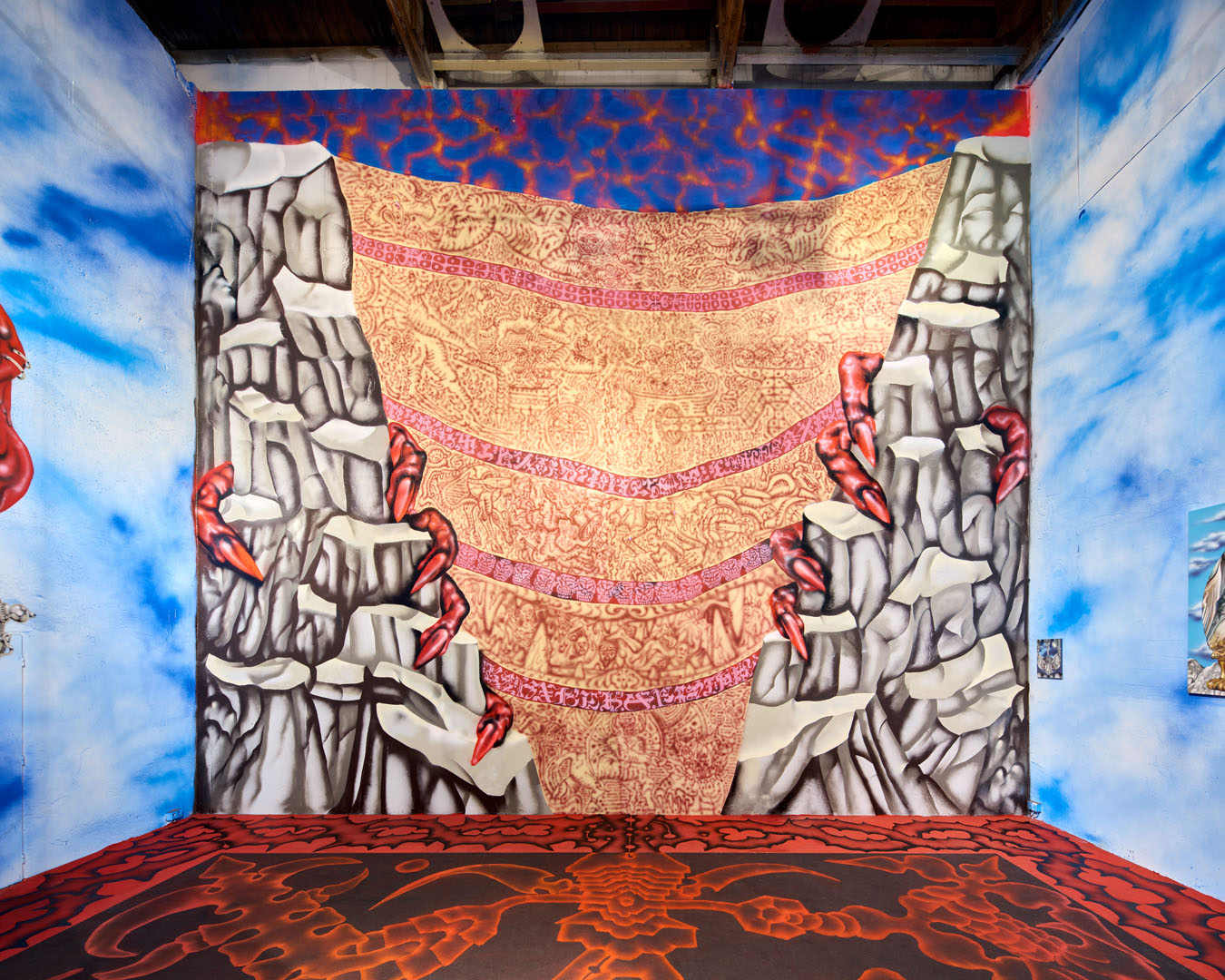
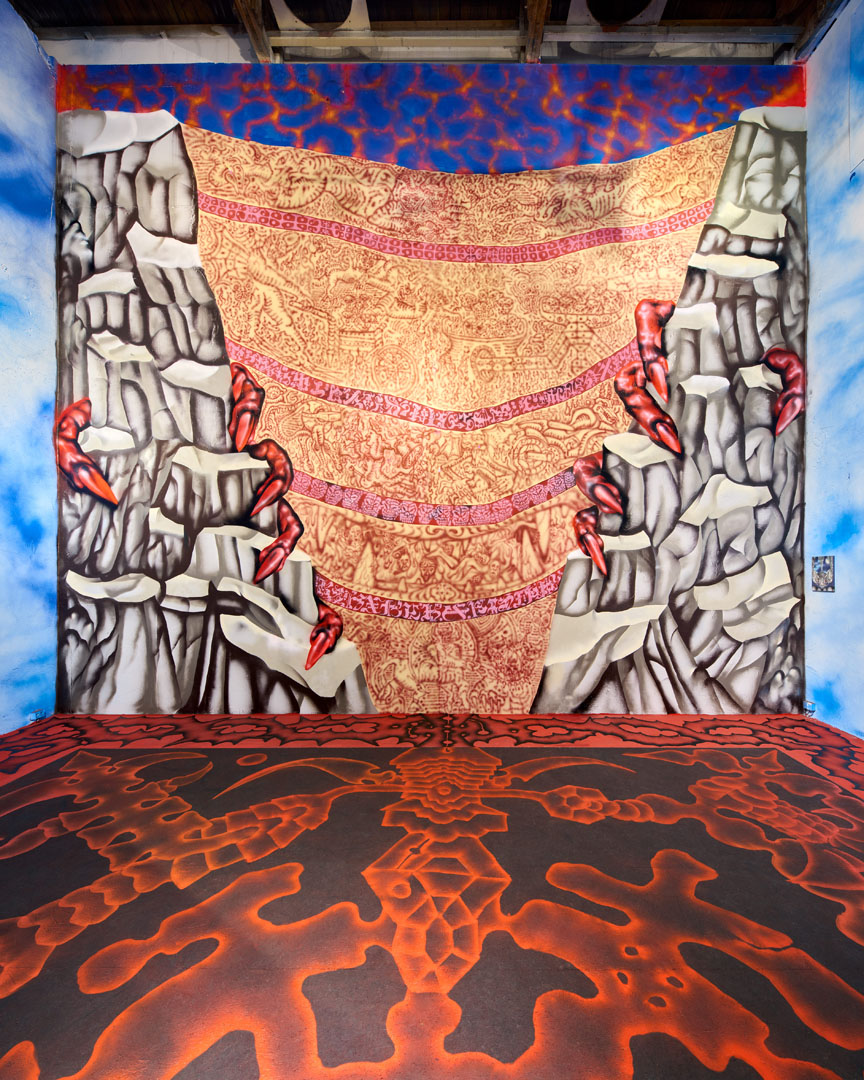
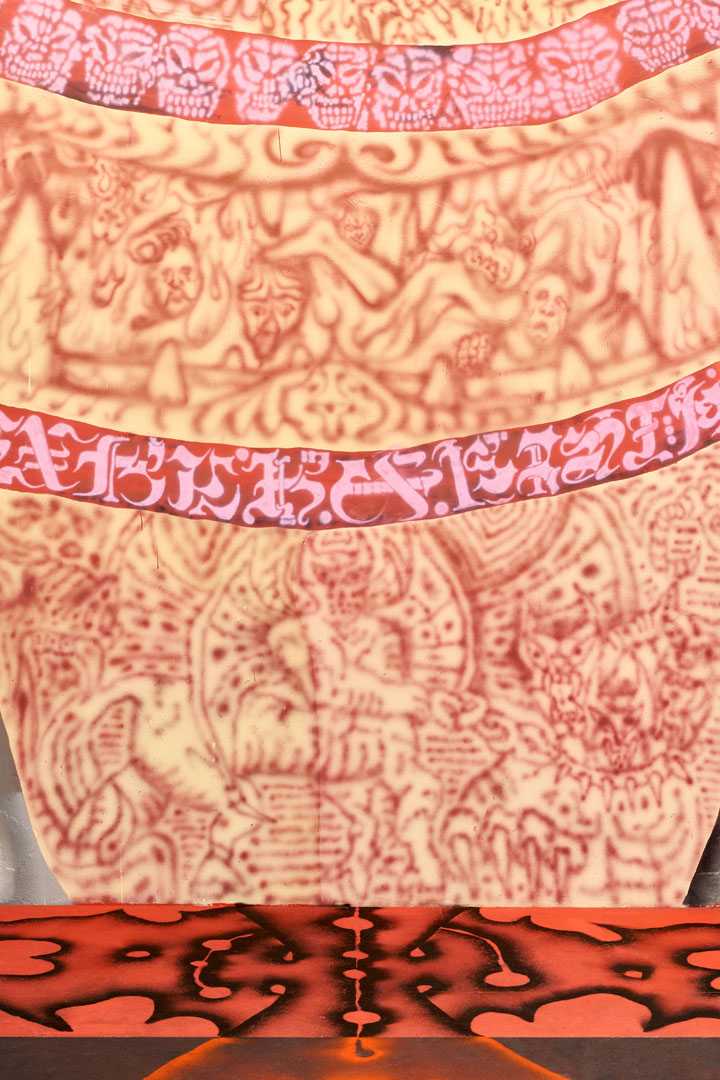
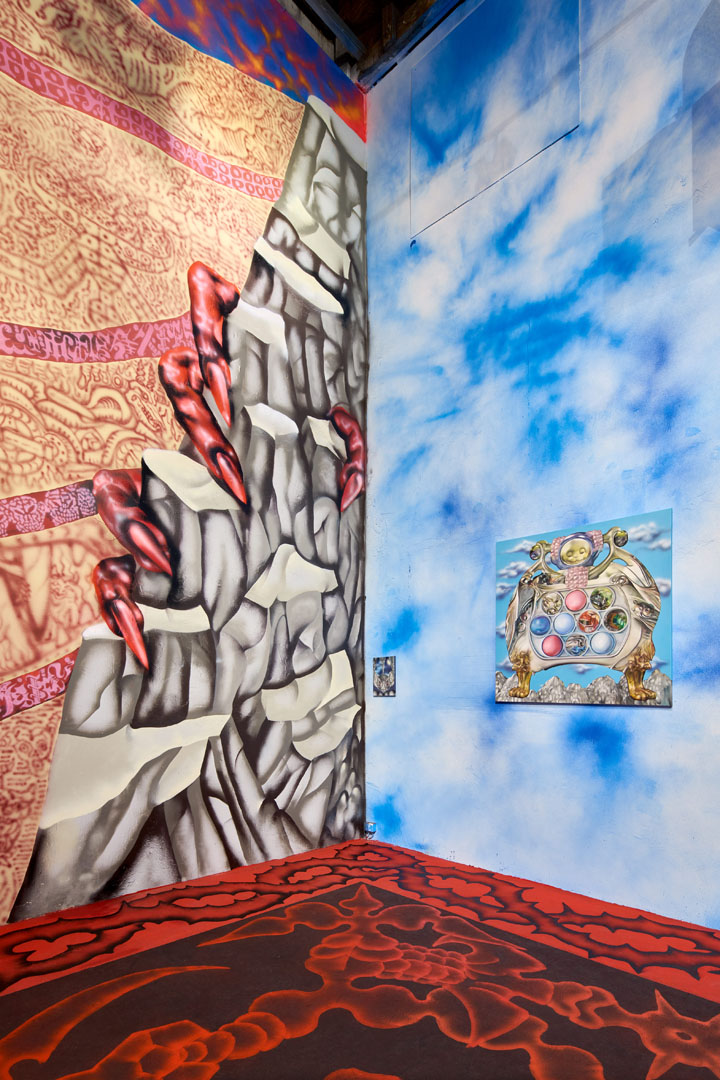
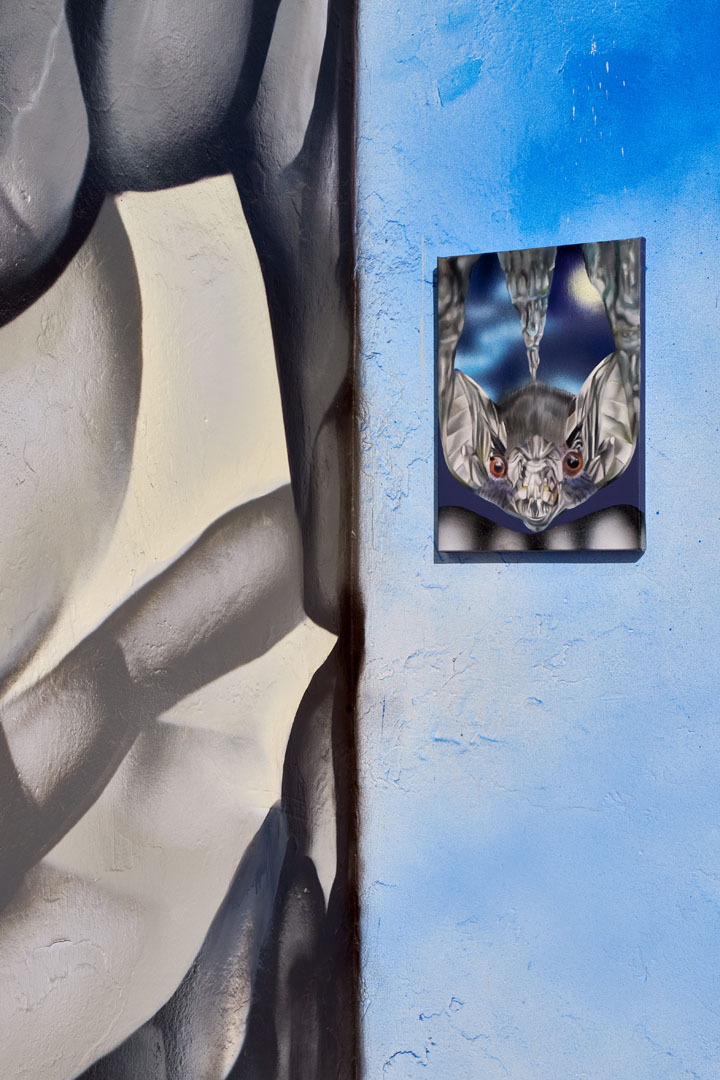
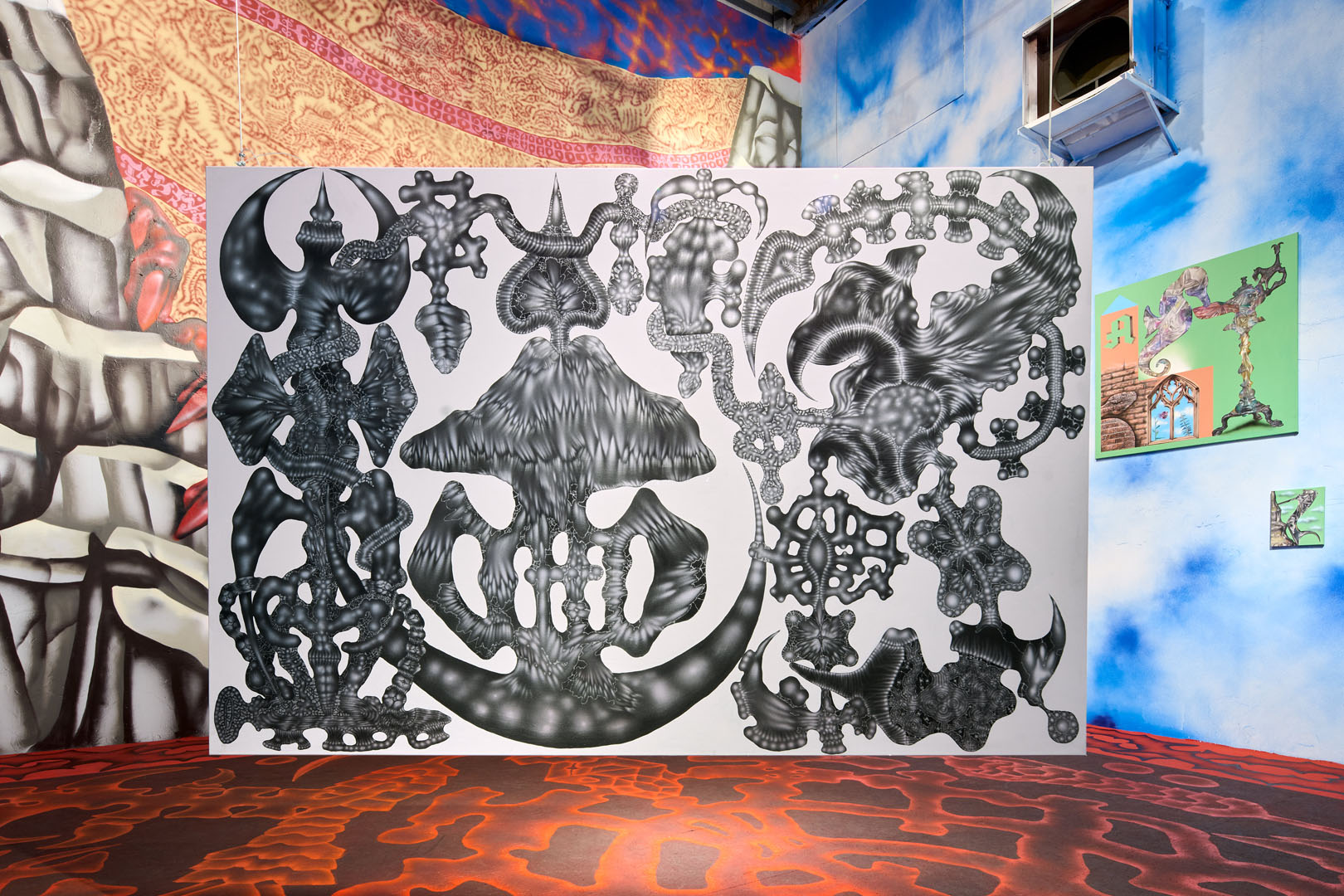
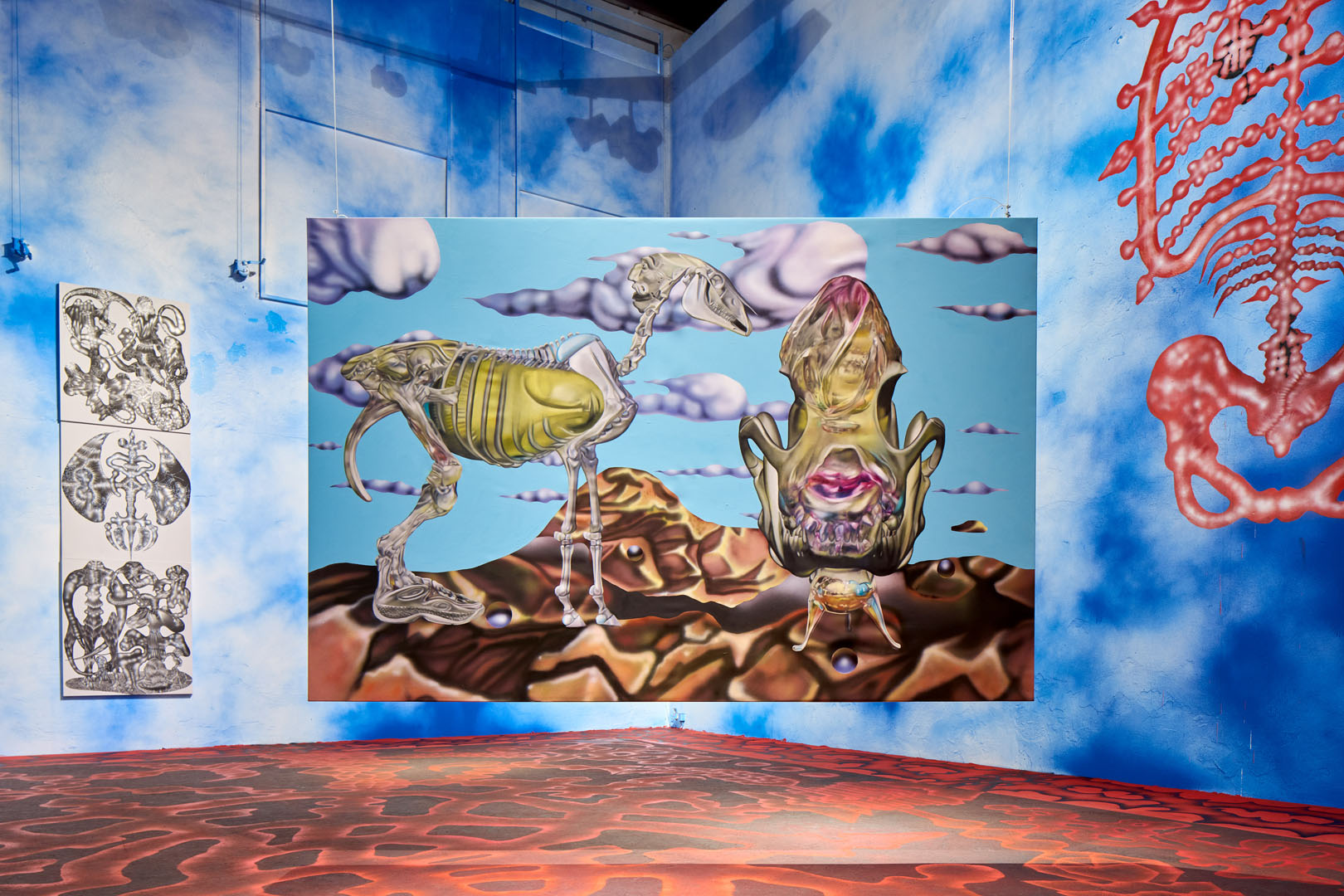
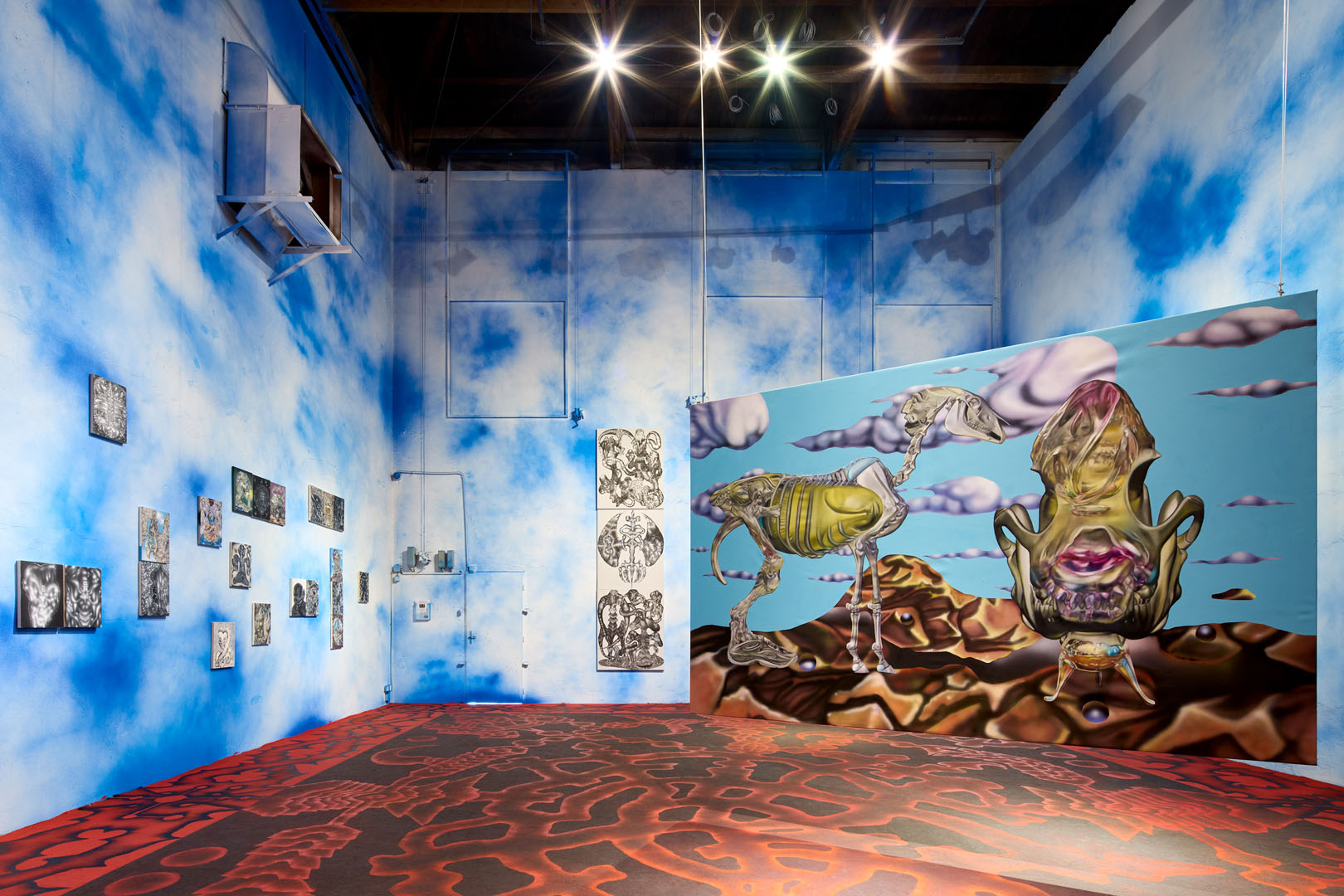
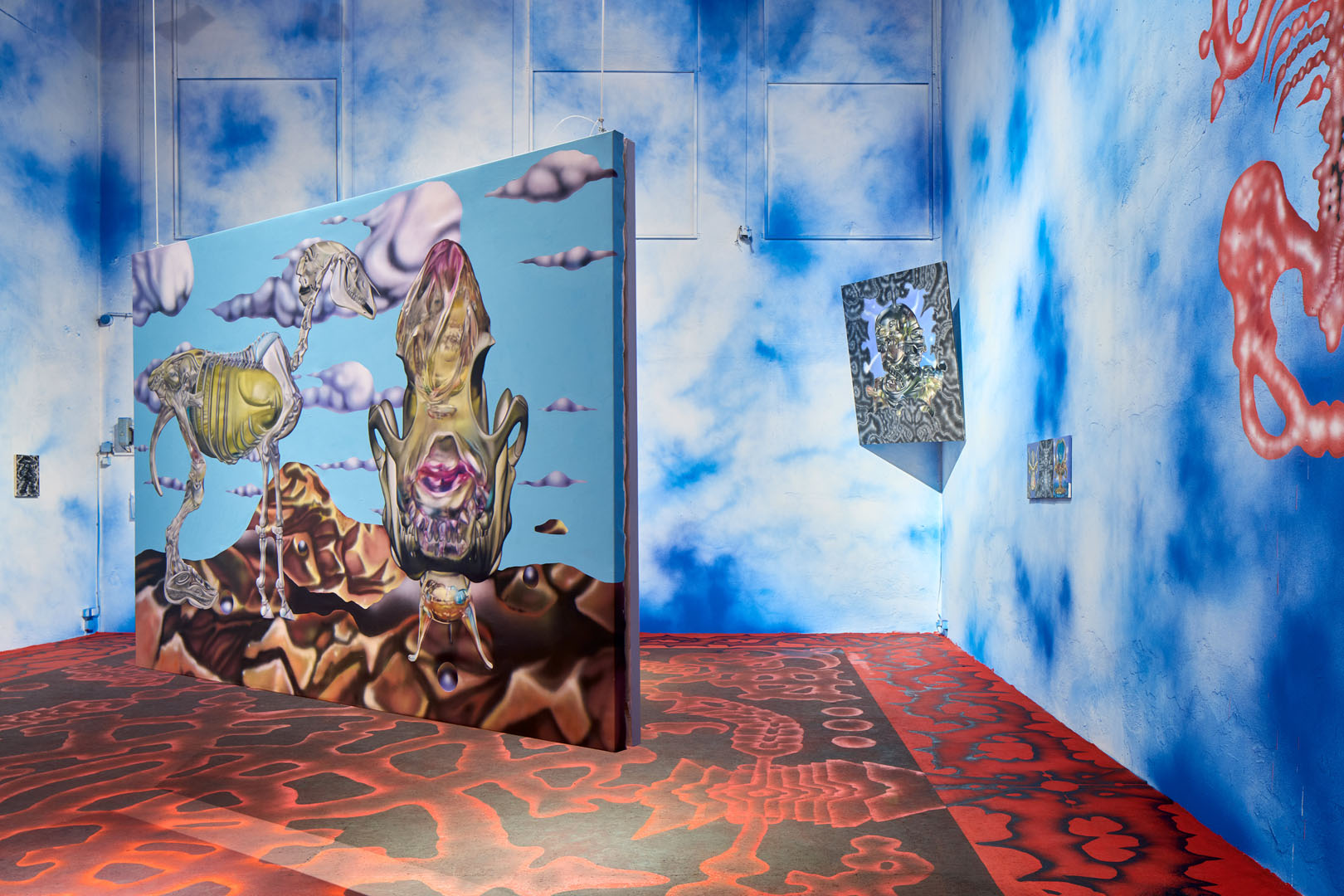
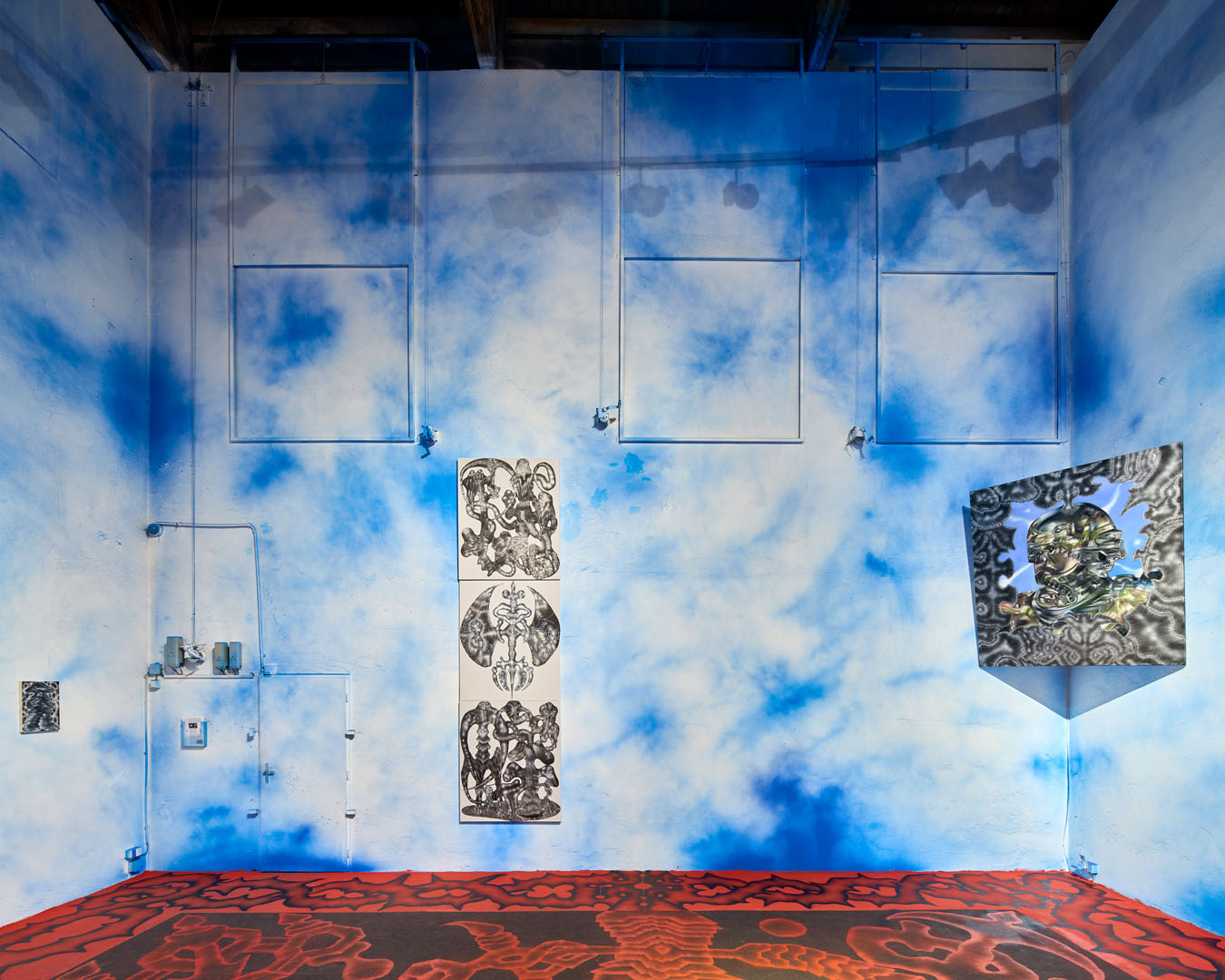
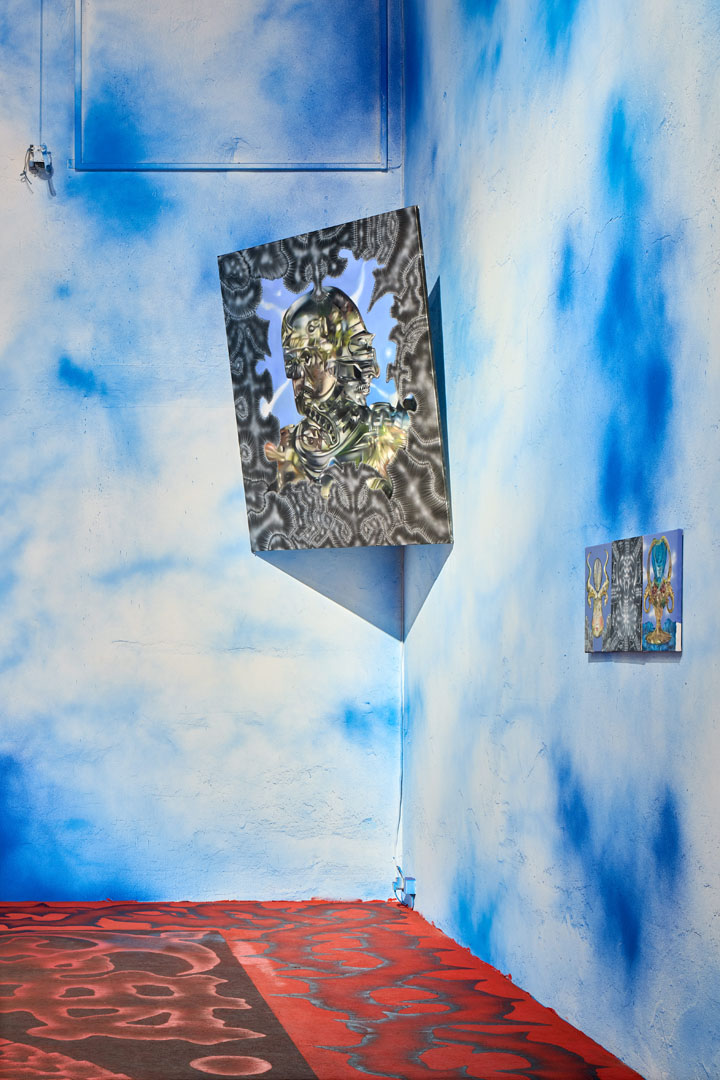
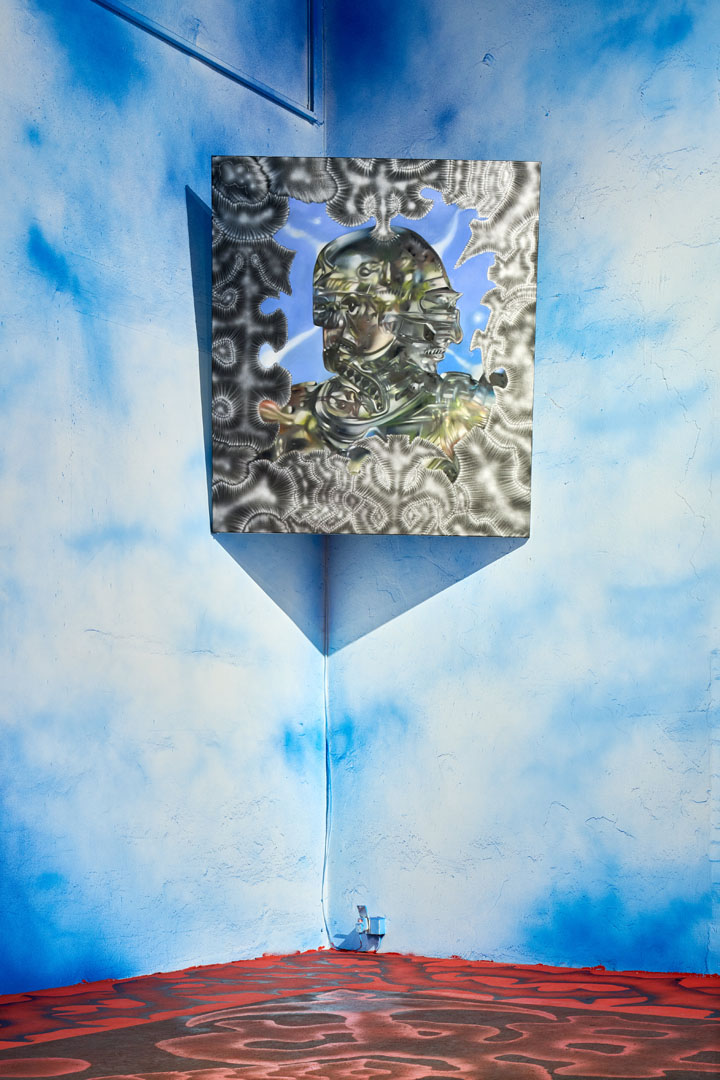
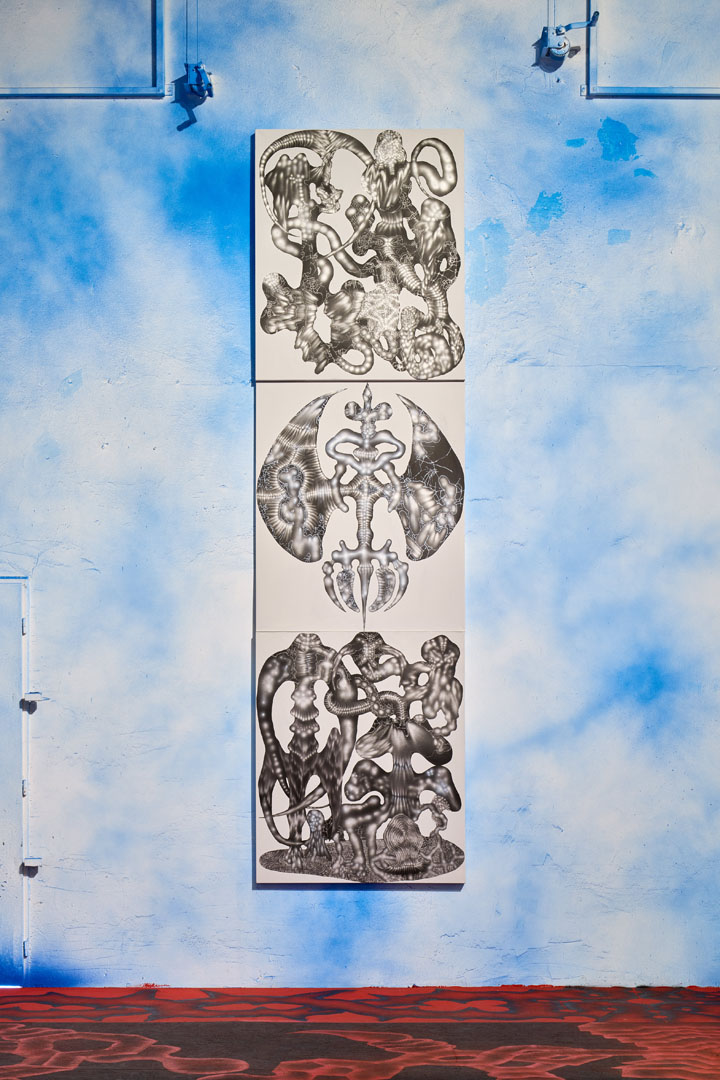
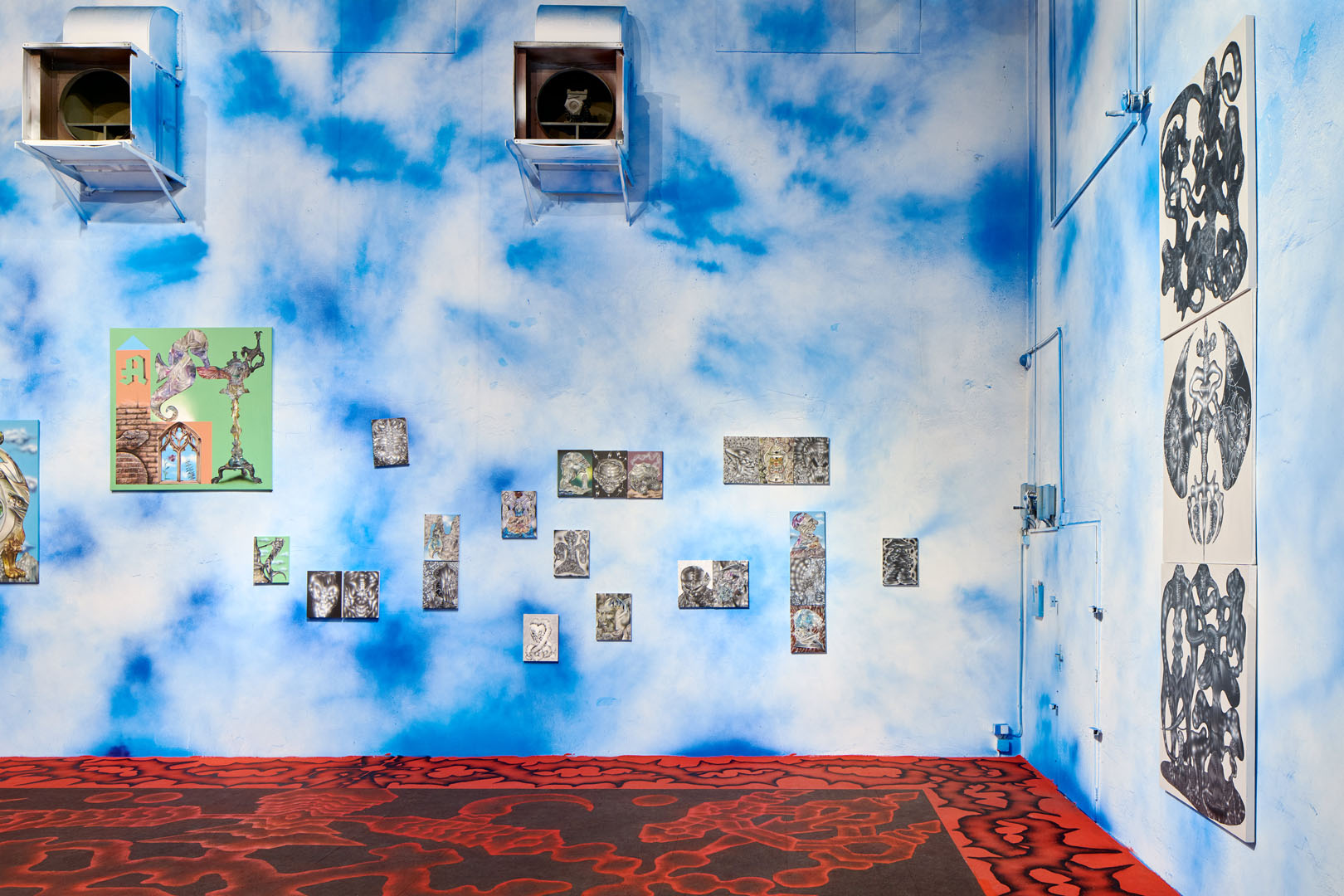
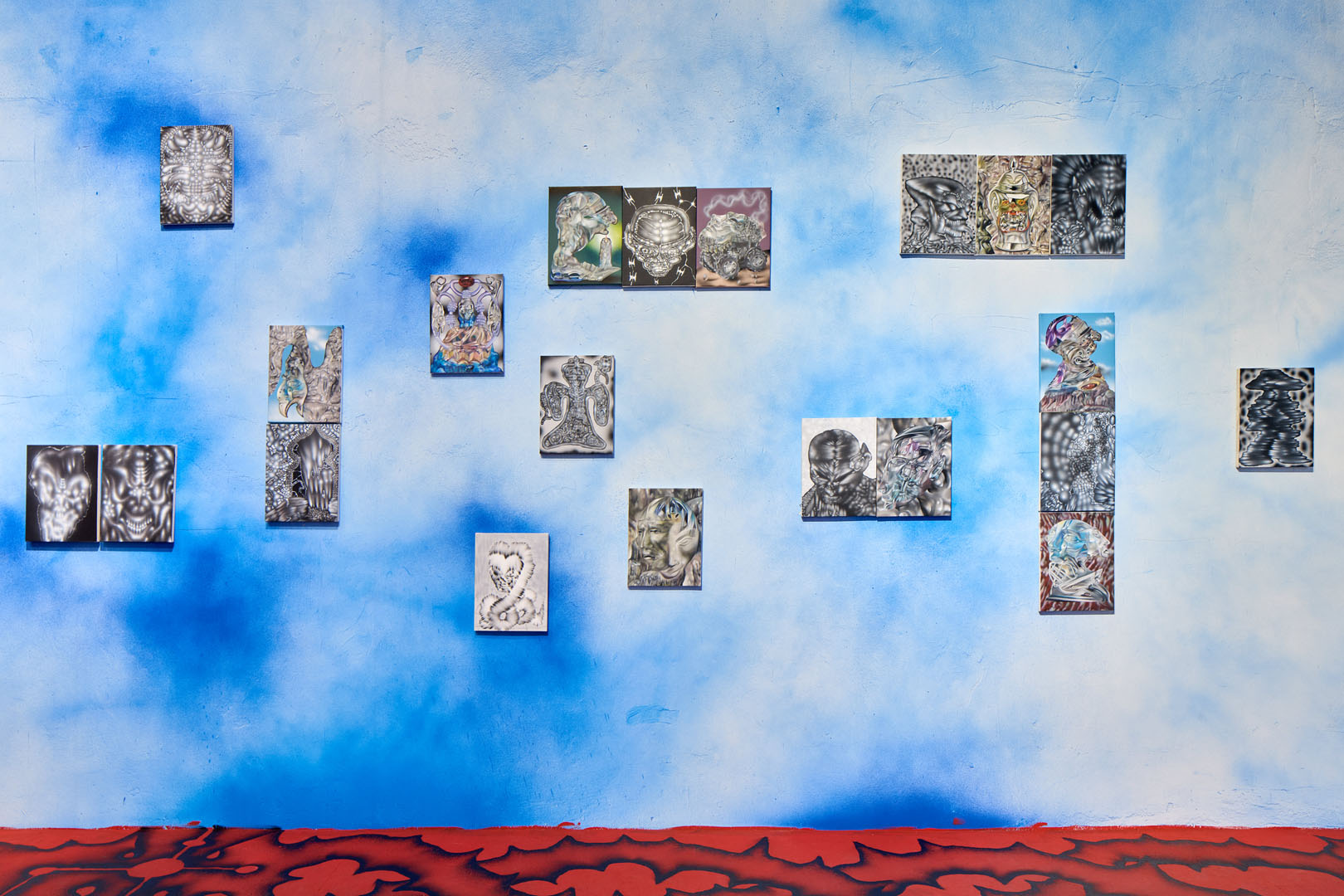
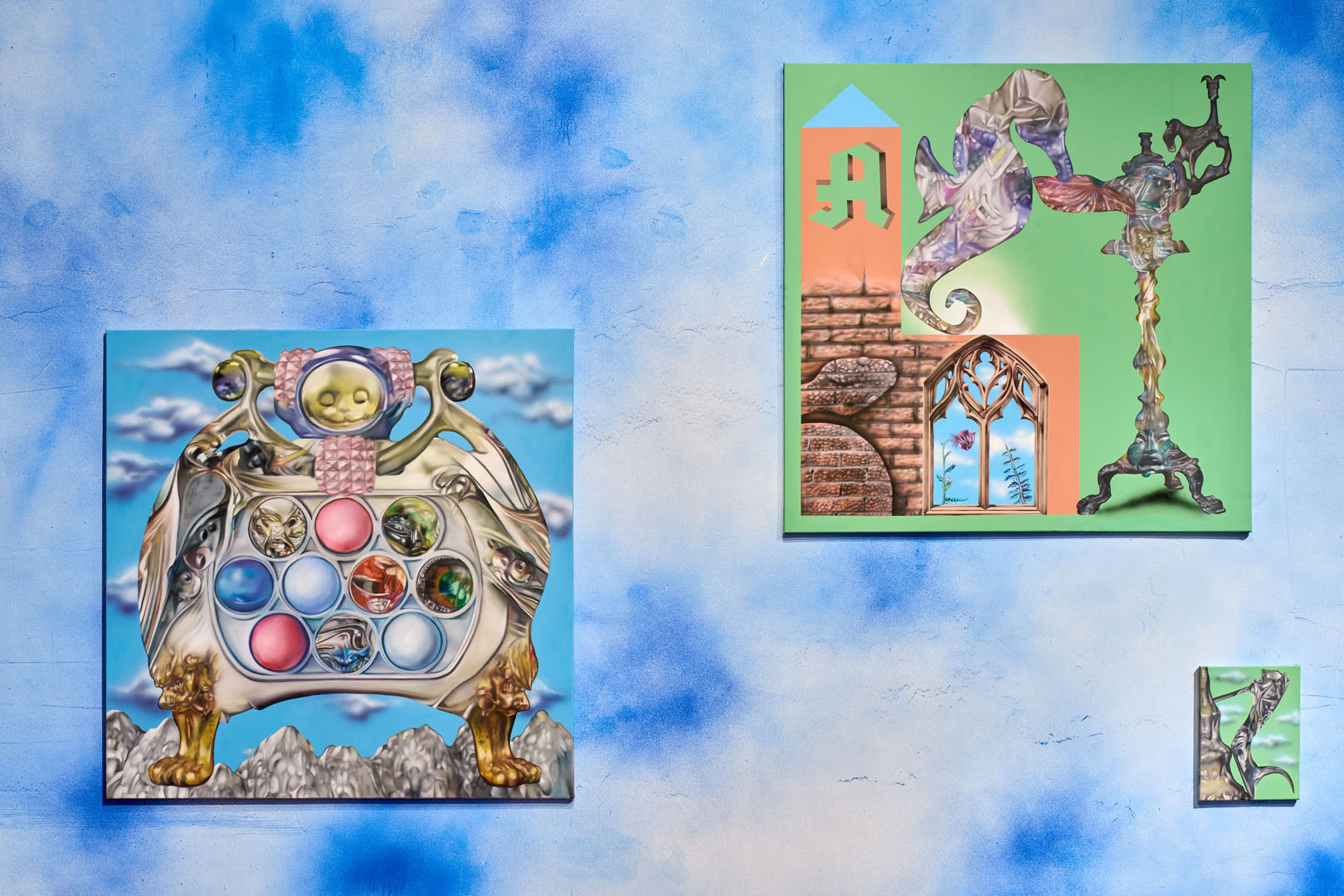
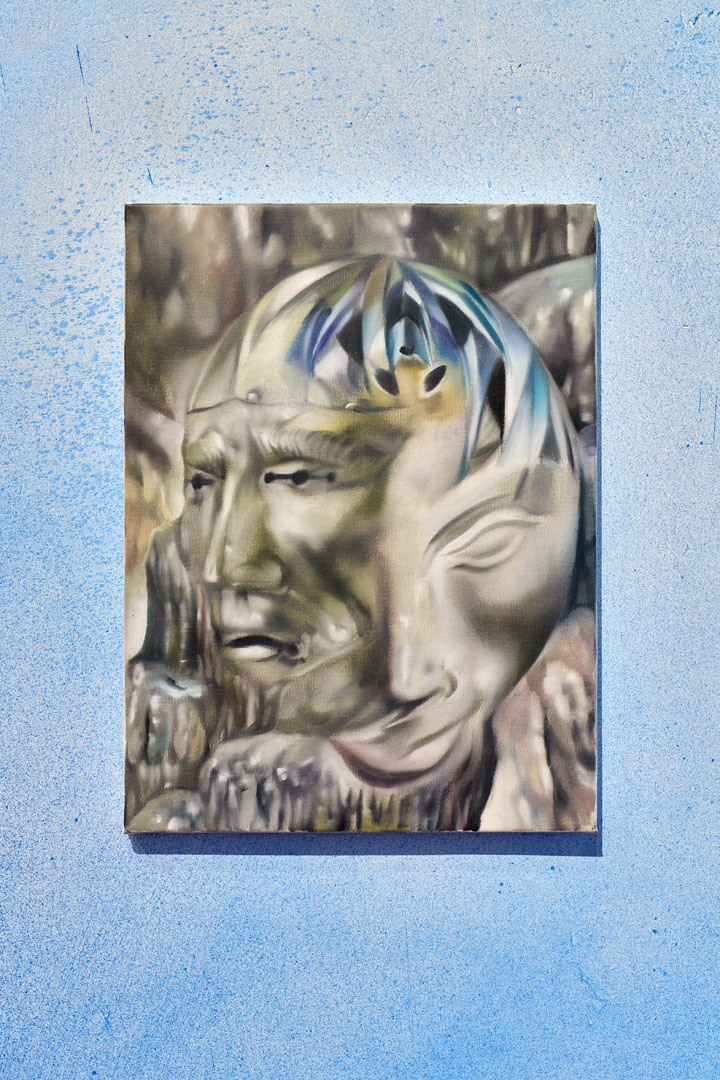
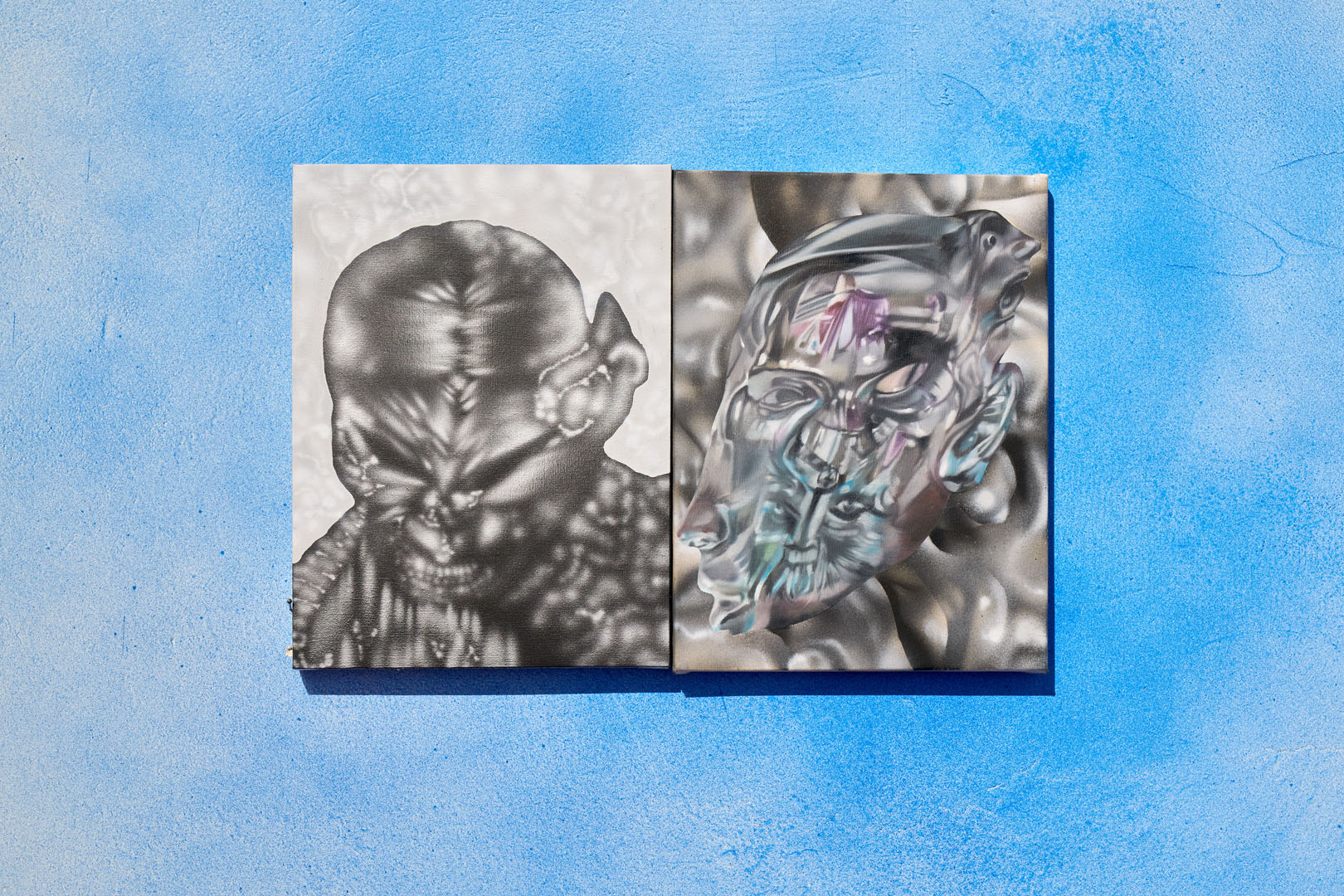
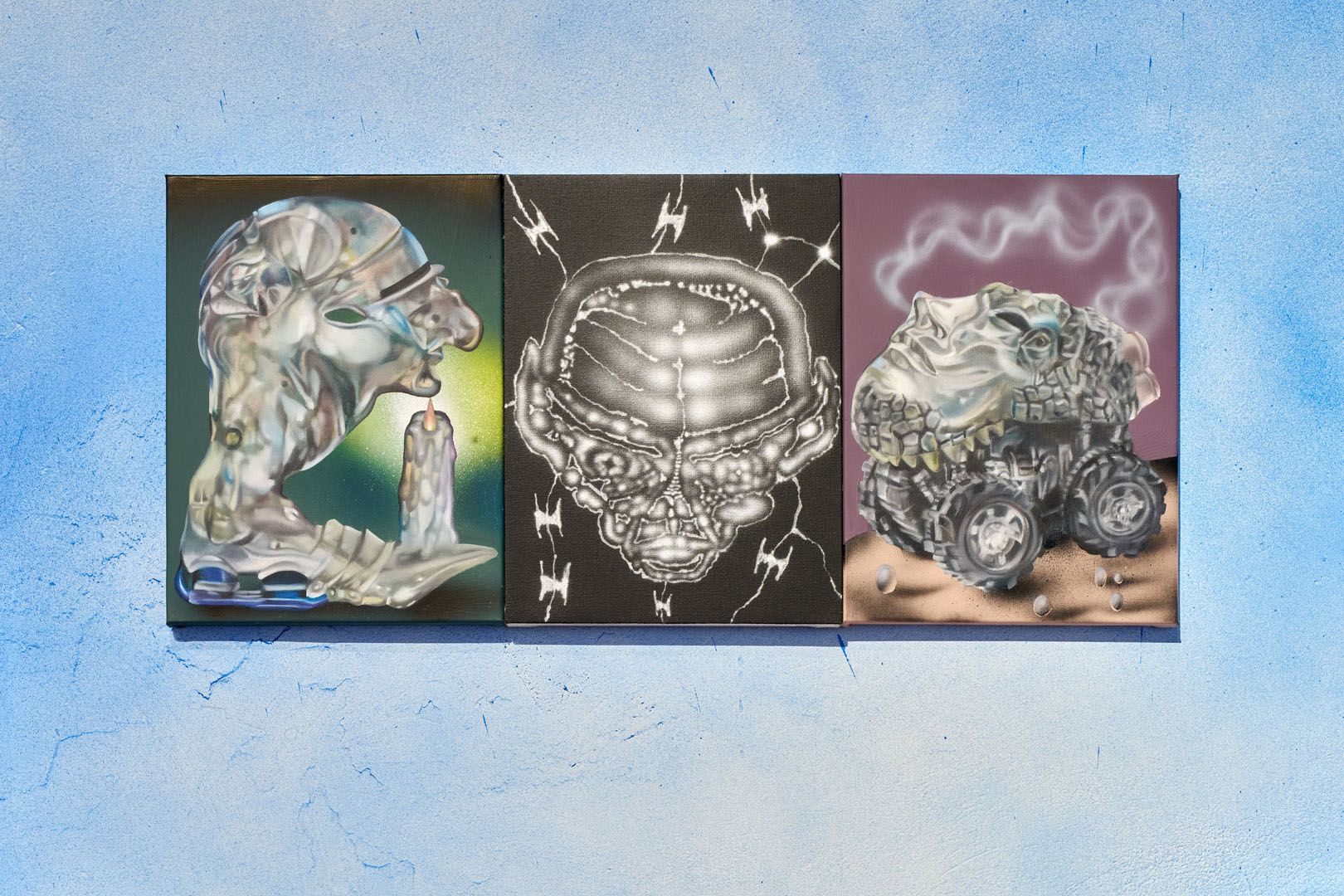
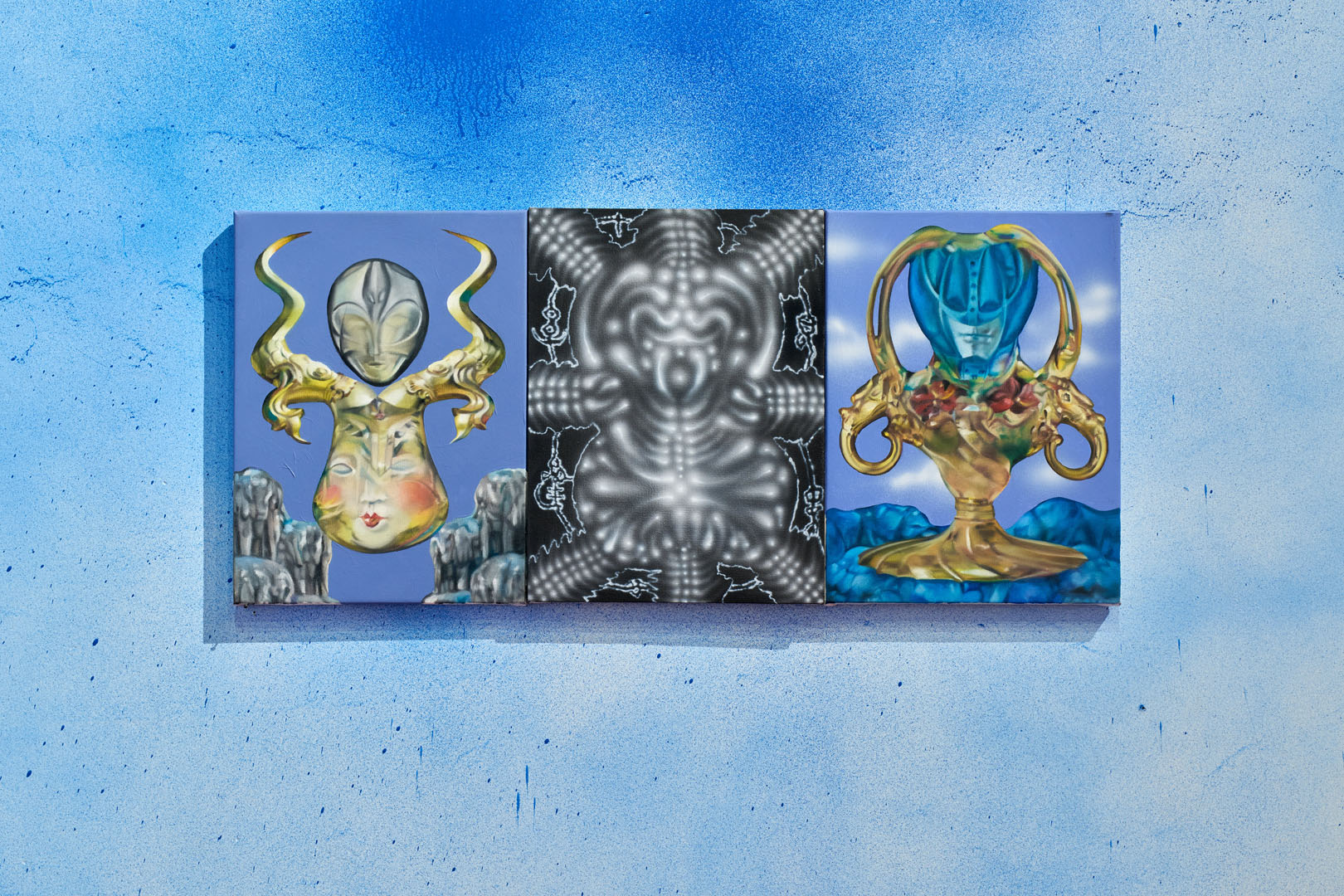
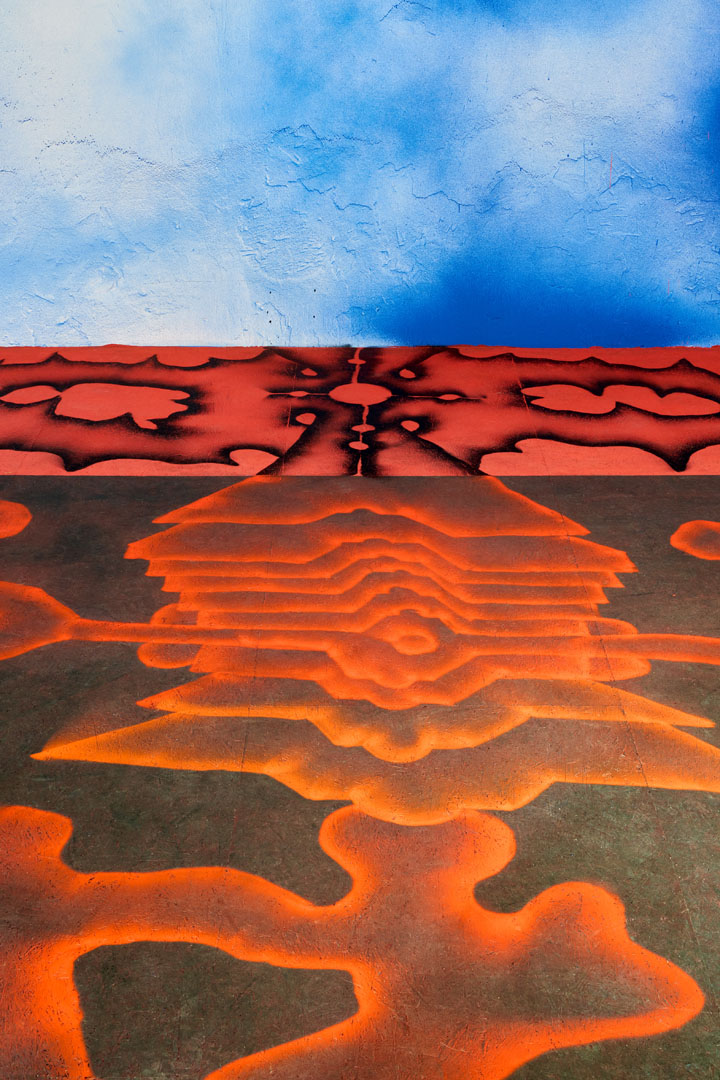
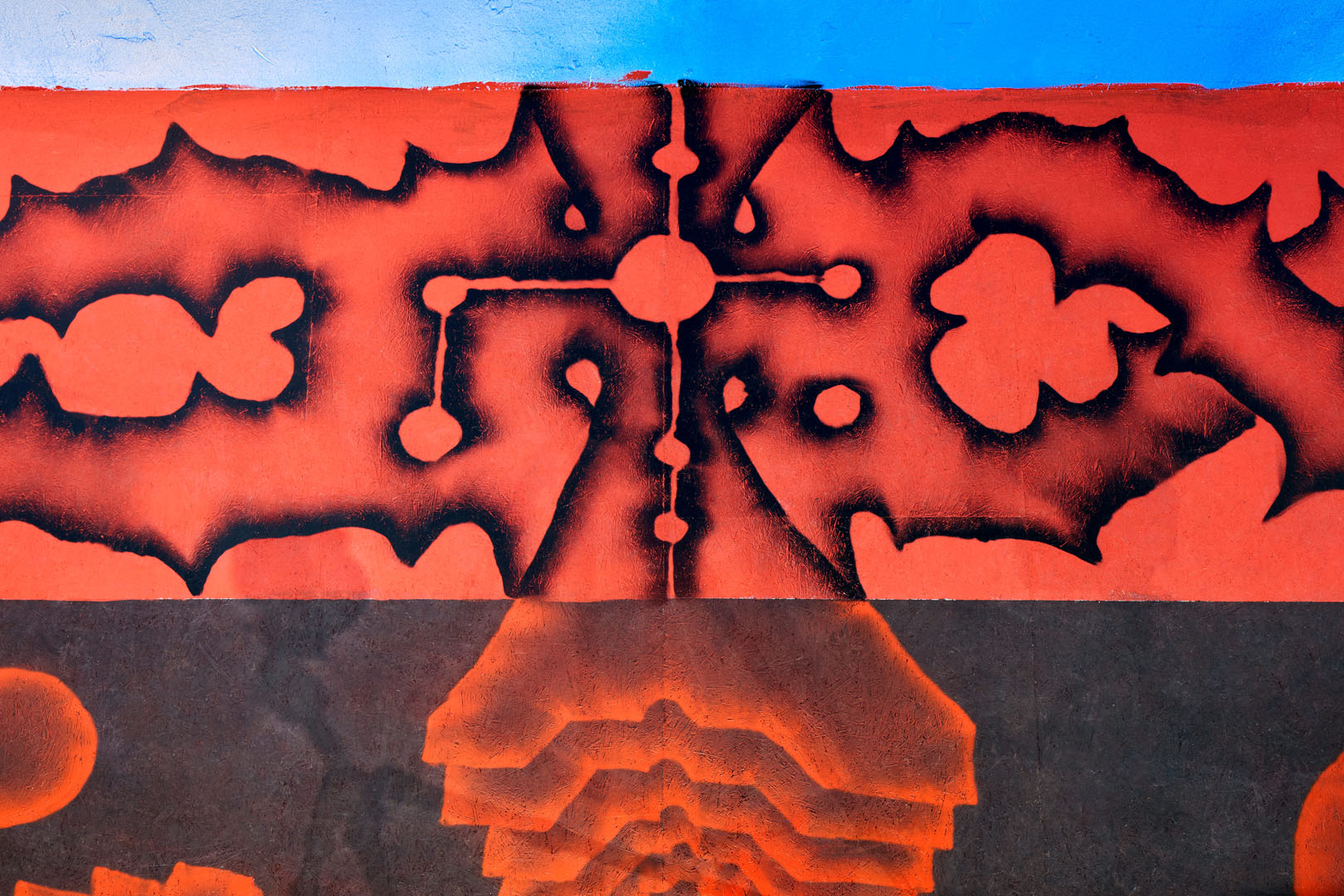
Dungeon Keepers: Earlier than Primordial Middle Ages
Botond Keresztesi, Stach Szumski
MeetFactory, Prague
February 15 — April 14, 2024
Curation: Piotr Sikora, Ján Gajdušek
Text: Piotr Sikora
Photography: Jan Kolský / All images copyright and courtesy of the artist and the gallery.
Botond Keresztesi (*1987 in Romania) is a Hungarian multimedia artist expressing himself in painting, drawing and installation. A graduate of the Hungarian University of Fine Arts in Budapest (2007-2012), his work deals with references to art history, pop culture, the digital world and the everyday, which crystallize into fragmented surreal landscapes in his paintings. Keresztesi’s recent solo and group exhibitions include Galerie Deroullion in Paris, Carl Kostyal in Malmö, Future Gallery in Berlin, the Hungarian National Gallery in Budapest, and Schloss Castle in Oslo. In the Czech Republic, he has so far had only one solo exhibition, presented in 2021 at the former Lítost Gallery.
Stach Szumski (*1992 in Gdańsk) graduated from the Faculty of Media Arts at the Academy of Fine Arts in Warsaw. He works with painting, installations, sculptures, graphics, drawings and interventions in public space. Influenced by grassroots practices related to post-graffiti, in 2013-2016 he co-directed Warsaw’s V9 gallery. In addition, in 2015-2020 he collaborated with Karolina Mełnicka on the Nomadic State project, in which he created an art collective and a fictional nomadic microstate. Szumski’s works have been exhibited in various galleries around the world, including CSW Zamek Ujazdowski, Kyoto Art Center and Galeria Parcel in Tokyo. He undertakes large-scale murals and interdisciplinary projects, often based on historical research during his extensive travels. He lives and works in Michałowice (Karkonosze). In the Czech Republic, he has so far had a solo exhibition at the Berlin Model Gallery in 2022.
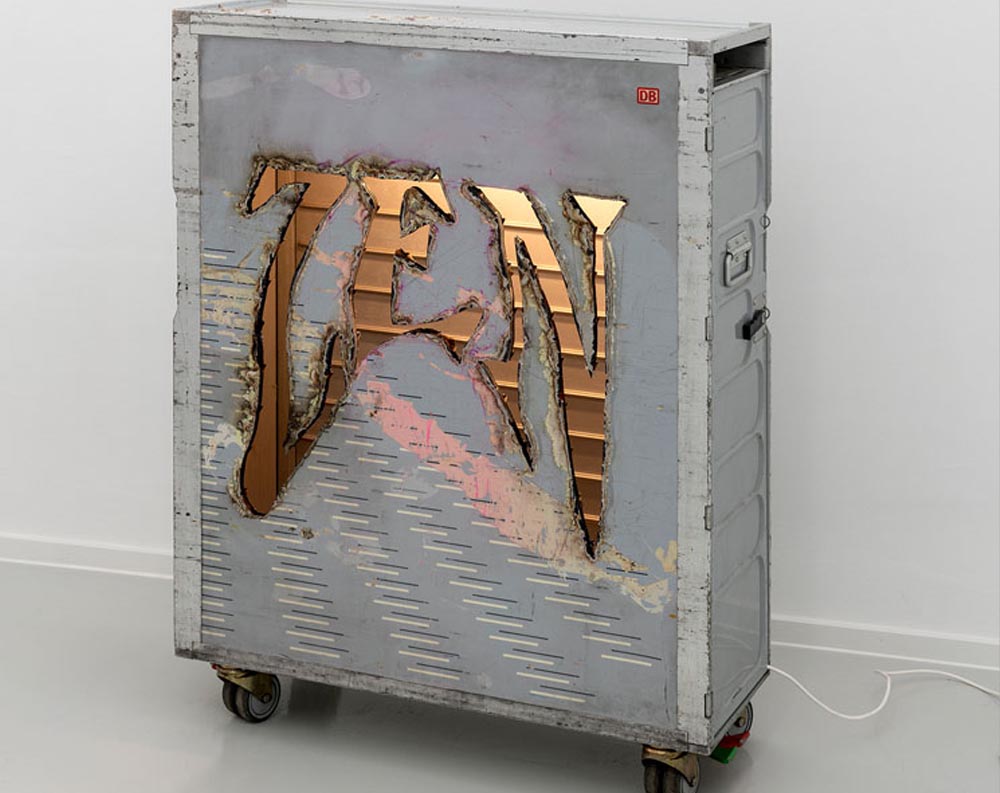
Shiver
Felix Kultau @ Philipp Pflug Contemporary, Frankfurt
READ MORE
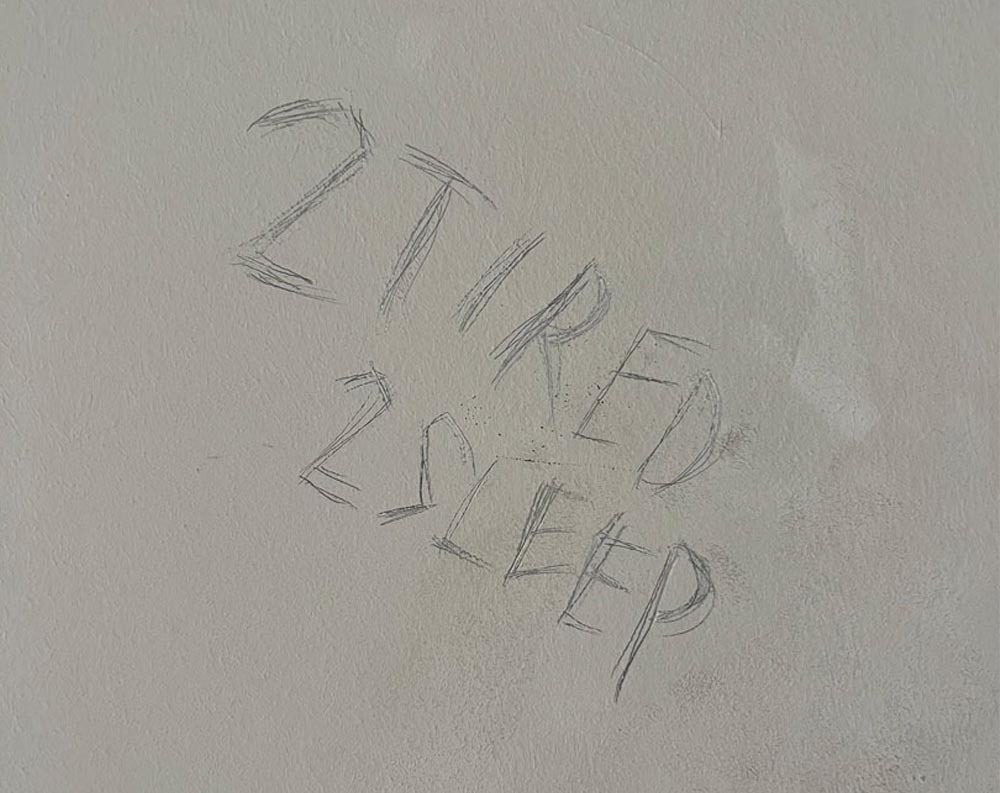
After The Orgy 001:
Maria Chiara Ziosi @Pharmakon Gallery, Bucharest
READ MORE
Advertise on
O Fluxo!
Go in-depth with our advertising options and check the best way to announce your work, exhibition, event, product, or gallery to the 60.000+ O Fluxo’s visitors.
read more➔
O FLUXO is an online platform for contemporary art.
EST. Lisbon 2010
Follow us:
@instagram
@facebook
O FLUXO
© 2023
